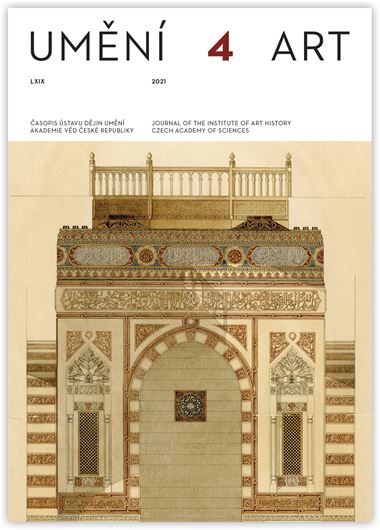Petr Uličný
Erotica & sapientia. Rudolf II’s Early Years at Prague Castle
In 1579 Rudolf II envisaged the construction of a grand royal palace at Prague Castle, with an extensive sculptural programme that he undoubtedly planned to commission from Giambologna’s pupil Hans Mont. This idea was probably inspired by the interiors of the towers in the Neugebäude, which had been richly decorated by Mont under Maximilian II in 1575–1576. However, Rudolf shelved the project and Mont left the Prague court in exasperation. In the early years of his reign, Rudolf was clearly looking for a style, and also the painter Bartholomeus Spranger, who waited for several years in Vienna for the emperor’s commission, fell victim to this search. His biographer Karel van Mander even wrote that Rudolf had little interest in art at that time. Thanks to a valuable report by Hans Ulrich Krafft in 1584, however, we know that the emperor already possessed a collection of art, but which had a distinctly erotic content. This was the reason why Rudolf concealed it from his wider society, and perhaps why he did not make his fondness for art known. It was not until 1588 that envoys at the Prague court began to report Rudolf’s preference for ‘lascivious’ art. It was also at the same time that the emperor decided to build a large picture gallery at the castle, called the Spanish Hall, the present Rudolf Gallery and finally found a strategy that would establish his magnificence and his reputation as one of the greatest patrons of art in Europe. On his way to it, he built the Summer House near his palace at the castle in about 1579–1582, and this became the home of his ‘erotic Kunstkammer’. Around 1586 he also had a studiolo created on the second floor of the White Tower, which shows that Rudolf was again inspired by the towers of Neugebäude, but unlike this model, he kept the decoration in Prague modest, like in his summer palace in the Imperial Mill, which was completed in 1594. While in the older Habsburg architecture there was a contrast between the austere palaces and richly decorated leisure structures, Rudolf seems to have come up with a new concept: buildings with a representational function were to be elaborately articulated, whereas private structures, including summer houses, were to be of modest form. Spranger’s fresco of Hermathena in the vault of the studiolo, inspired by the studiolo in the Palazzo Farnese in Caprarola, was intended to symbolise the abode of a wise monarch, as were other planned frescos. It was thus erotica & sapientia that defined Rudolf’s programme in his early years at Prague Castle, and later also played a crucial role in his subsequent magnificent period.
Author's email:
ulicny@udu.cas.cz
Full-text in the Digital Library of the Czech Academy of Sciences:
https://kramerius.lib.cas.cz/uuid/uuid:d4fea69b-a64d-4d69-a225-412e941a7545
< back

